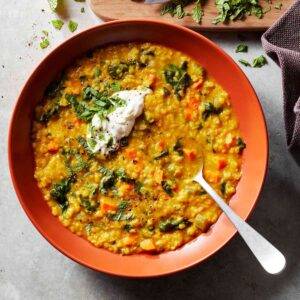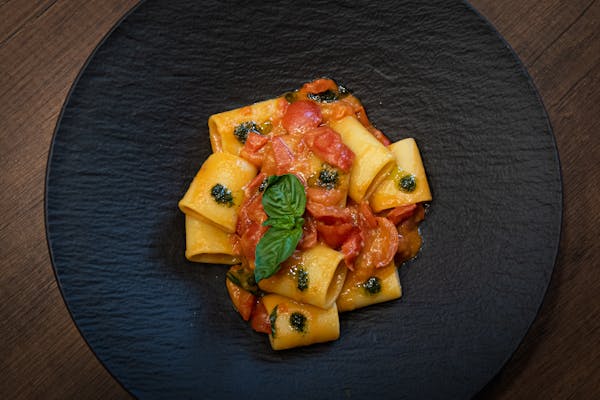
Boil spaghetti. Prepare a sauce with tomatoes, garlic, and olive oil, then mix with the cooked spaghetti.
Spaghetti is a beloved dish enjoyed worldwide for its simplicity and delicious taste. Using just a few ingredients, you can create a flavorful meal that suits any occasion. Fresh tomatoes, garlic, and olive oil combine to create a rich sauce that perfectly complements the pasta.
This recipe is perfect for busy weeknights or a cozy family dinner. It’s easy to prepare, quick to cook, and sure to please everyone at the table. With this simple spaghetti recipe, you can bring a taste of Italy into your home effortlessly. Enjoy a hearty, satisfying dish that’s both nutritious and comforting.
Required Ingredients For Spaghetti
Spaghetti is a classic dish that brings joy to many dinner tables. Making a simple spaghetti recipe requires the right ingredients to create a delicious meal. This section will cover the essential ingredients you need, starting with pasta types, exploring different sauce options, and finishing with additional seasonings to elevate your dish. 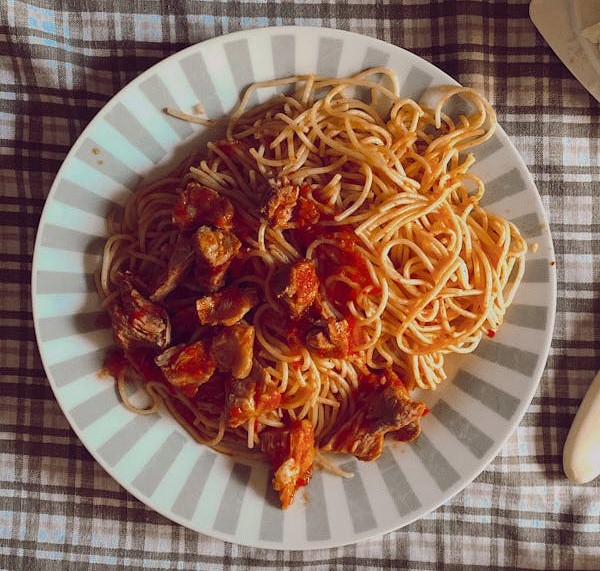
Pasta Types
Choosing the right type of pasta is crucial for your spaghetti recipe. Here are some popular options:
- Spaghetti: The classic choice, long and thin, perfect for most sauces.
- Spaghettini: Thinner than spaghetti, cooks faster, great for light sauces.
- Capellini: Also known as angel hair, very thin, pairs well with delicate sauces.
- Whole Wheat Spaghetti: A healthier option with a nutty flavor, higher in fiber.
- Gluten-Free Spaghetti: Made from rice or corn, ideal for gluten-sensitive individuals.
Here’s a quick comparison table for reference:
| Pasta Type | Thickness | Cooking Time | Best Pairings |
|---|---|---|---|
| Spaghetti | Medium | 8-10 minutes | Tomato-based sauces |
| Spaghettini | Thin | 6-8 minutes | Light sauces |
| Capellini | Very Thin | 3-5 minutes | Delicate sauces |
| Whole Wheat Spaghetti | Medium | 10-12 minutes | Hearty sauces |
| Gluten-Free Spaghetti | Medium | 8-10 minutes | All sauces |
Sauce Options
The sauce is what gives your spaghetti its unique flavor. Here are some delicious options:
- Marinara Sauce: A classic tomato-based sauce with garlic, onions, and herbs.
- Alfredo Sauce: A creamy sauce made with butter, cream, and Parmesan cheese.
- Pesto Sauce: A vibrant green sauce made from basil, pine nuts, garlic, and olive oil.
- Bolognese Sauce: A rich meat sauce with ground beef, tomatoes, and wine.
- Aglio e Olio: A simple sauce with garlic, olive oil, and red pepper flakes.
Here’s how you can make a quick marinara sauce:
- Heat olive oil in a pan.
- Add chopped garlic and onions, sauté until golden.
- Add crushed tomatoes and stir.
- Season with salt, pepper, and Italian herbs.
- Simmer for 15-20 minutes.
This sauce pairs perfectly with any pasta type mentioned above.
Additional Seasonings
Seasonings can enhance the flavor of your spaghetti dish. Here are some must-have seasonings:
- Salt: Essential for cooking pasta and seasoning the sauce.
- Black Pepper: Adds a mild heat and depth of flavor.
- Red Pepper Flakes: For those who enjoy a bit of spice.
- Italian Herbs: A mix of oregano, basil, thyme, and rosemary.
- Parmesan Cheese: Grated cheese adds a rich, savory note.
- Fresh Basil: Adds a fresh, aromatic touch to your dish.
To elevate your spaghetti, sprinkle fresh herbs and grated cheese on top. Here’s a quick tip: add a pinch of red pepper flakes to your sauce for a spicy kick. Freshly cracked black pepper also enhances the flavor profile significantly.
How To Cook The Pasta For A Perfect Spaghetti
Making a simple spaghetti recipe is easy and fun. Cooking the pasta is a key step to get it right. In this section, we’ll cover the essentials of boiling water, timing the cook, and testing for doneness. Let’s dive in!
Water Boiling Tips
To cook spaghetti perfectly, start with boiling water. Use a large pot to give the pasta room to move. This prevents sticking.
Follow these steps:
- Fill the pot with cold water. Use about 4-6 quarts per pound of pasta.
- Place the pot on the stove and turn the heat to high.
- Add a tablespoon of salt to the water. This boosts the flavor of the pasta.
- Wait for the water to come to a rolling boil. This means big bubbles are breaking the surface.
Remember to use plenty of water and salt. This helps the pasta cook evenly and taste delicious.
How Much Time Is Required To Cook Spaghetti?
Timing is crucial for perfect spaghetti. Overcooked pasta turns mushy, while undercooked pasta is too hard. Here’s how to time it right:
- Check the package for cooking time. Most spaghetti takes 8-12 minutes.
- Once the water is boiling, add the pasta. Stir it right away to prevent sticking.
- Set a timer for one minute less than the shortest time on the package.
- Stir the pasta every couple of minutes. This keeps it from clumping together.
Use a timer to keep track. This ensures you don’t overcook the pasta.
Testing For Doneness
Testing the pasta ensures it’s cooked just right. You want it to be al dente. This means it’s firm to the bite. Follow these steps:
- When the timer goes off, taste a piece of pasta. It should be firm but not hard.
- If it’s too firm, cook for another minute and test again.
- Repeat until the pasta is perfect.
- Once done, drain the pasta in a colander. Do not rinse, as this washes away flavor.
Testing the pasta is the best way to ensure it’s cooked to your liking.
How To Prepare The Sauce For Spaghetti
Spaghetti is a classic dish loved by many. The secret lies in the sauce. Preparing the sauce can take your spaghetti from good to great. Whether you like tomato-based, garlic-infused, or creamy sauces, making the right choice can elevate your meal.
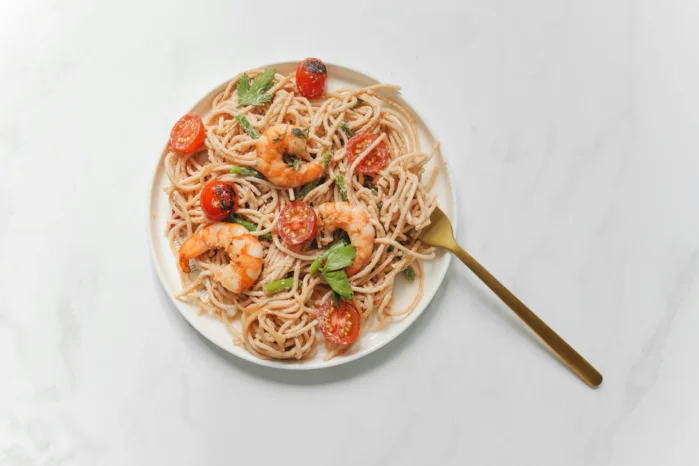
Basic Tomato Sauce
The Basic Tomato Sauce is a staple in many households. It’s simple to make and full of flavor. Here’s how to prepare it:
- Ingredients:
- 2 cans of crushed tomatoes
- 1 medium onion, finely chopped
- 2 cloves of garlic, minced
- 2 tbsp olive oil
- Salt and pepper to taste
- 1 tsp sugar
- Fresh basil leaves
Instructions:
- Heat the olive oil in a pan over medium heat.
- Add the chopped onion and sauté until it becomes translucent.
- Stir in the minced garlic and cook for another minute.
- Pour in the crushed tomatoes and stir well.
- Add salt, pepper, and sugar. Let it simmer for 20 minutes.
- Top with fresh basil leaves just before serving.
This basic sauce can be enhanced with red pepper flakes for heat or a dash of red wine for depth.
Garlic And Olive Oil
Garlic and Olive Oil sauce is light yet flavorful. Perfect for those who prefer a non-tomato-based sauce. Here’s how to make it:
- Ingredients:
- 4 cloves of garlic, thinly sliced
- 1/2 cup extra virgin olive oil
- 1 tsp red pepper flakes
- 1/4 cup chopped parsley
- Salt to taste
- Grated Parmesan cheese
Instructions:
- Heat the olive oil in a large pan over low heat.
- Add the sliced garlic and cook until golden brown.
- Stir in the red pepper flakes.
- Add the cooked spaghetti directly into the pan.
- Toss well to coat the pasta with the garlic oil.
- Season with salt and sprinkle with chopped parsley.
- Top with grated Parmesan cheese before serving.
This sauce is quick and pairs well with a side of garlic bread.
How To Add Creamy Variations In Spaghetti
If you love creamy textures, these Creamy Variations are for you. Here are two popular options:
| Creamy Alfredo | Creamy Tomato |
|---|---|
|
|
Instructions for Creamy Alfredo:
- Heat butter in a pan over medium heat.
- Add minced garlic and sauté until fragrant.
- Pour in the heavy cream and bring to a simmer.
- Add grated Parmesan and stir until melted.
- Season with salt and pepper.
- Toss with cooked pasta and serve hot.
Instructions for Creamy Tomato:
- Heat olive oil in a pan over medium heat.
- Add tomato sauce and bring to a simmer.
- Stir in heavy cream and grated Parmesan.
- Cook until the sauce thickens.
- Season with salt and pepper.
- Toss with cooked pasta and serve.
These creamy sauces are rich and perfect for a cozy dinner.
How To Mix Pasta And Sauce For A Perfect Spaghetti
Creating the perfect spaghetti dish involves more than just cooking pasta and pouring sauce over it. Combining pasta and sauce is an art that enhances the flavors and texture of the dish. This section will explore key techniques to achieve the best results, ensuring each bite is delicious and perfectly balanced.
Tossing Techniques
Tossing your pasta with sauce is crucial for a well-mixed dish. Proper tossing techniques ensure every strand of spaghetti is evenly coated with sauce. Here are some simple yet effective methods:
- Use a large pan: This provides ample space to mix without spilling.
- Add pasta water: Reserve a cup of pasta water. Add it to the sauce to help it stick to the pasta.
- Toss gently: Use tongs or a large fork to lift and turn the pasta. This prevents breaking the strands.
- Cook together: Combine the pasta and sauce in a pan over low heat. Toss for 1-2 minutes.
For best results, follow these steps:
- Drain the pasta, reserving some pasta water.
- Heat the sauce in a large pan.
- Add the pasta to the pan with a small amount of pasta water.
- Toss gently until the pasta is evenly coated.
- Serve immediately.
Adjusting Consistency
The consistency of your pasta and sauce can make or break the dish. Adjusting consistency ensures that the sauce clings to the pasta, providing a harmonious blend of flavors. Here are some tips to get the right consistency:
- Use pasta water: The starch in the pasta water helps thicken the sauce.
- Simmer longer: Let the sauce simmer a bit longer to reduce and thicken.
- Add cheese: A handful of grated cheese can thicken the sauce.
- Mix in butter: A small amount of butter adds richness and thickness.
For a perfectly adjusted sauce, follow these steps:
- Bring the sauce to a simmer.
- Add a ladle of pasta water.
- Stir in grated cheese or butter if desired.
- Simmer until the sauce reaches the desired thickness.
- Combine with pasta and toss.
Flavor Balancing Tips For Spaghetti
Balancing flavors in your spaghetti dish is key to a memorable meal. Flavor balancing ensures that no single ingredient overpowers the dish. Here are some tips to balance flavors:
- Season properly: Salt and pepper are essential for enhancing flavors.
- Add acidity: A splash of lemon juice or vinegar brightens the dish.
- Sweetness: A pinch of sugar can balance acidity in tomato sauce.
- Herbs and spices: Fresh basil, oregano, and garlic add depth.
Follow these steps to balance flavors:
- Taste the sauce before combining with pasta.
- Add salt and pepper to taste.
- Incorporate a splash of lemon juice or vinegar if needed.
- Add a pinch of sugar if the sauce is too acidic.
- Mix in fresh herbs and spices for added flavor.
By mastering these techniques, your simple spaghetti recipe will become a delightful and well-balanced meal.
Serving Tips For Spaghetti
Spaghetti is a beloved dish worldwide, cherished for its simplicity and deliciousness. Serving suggestions can elevate your simple spaghetti recipe from ordinary to extraordinary. Let’s explore various ways to enhance your meal with garnishes, perfect side pairings, and presentation tips.
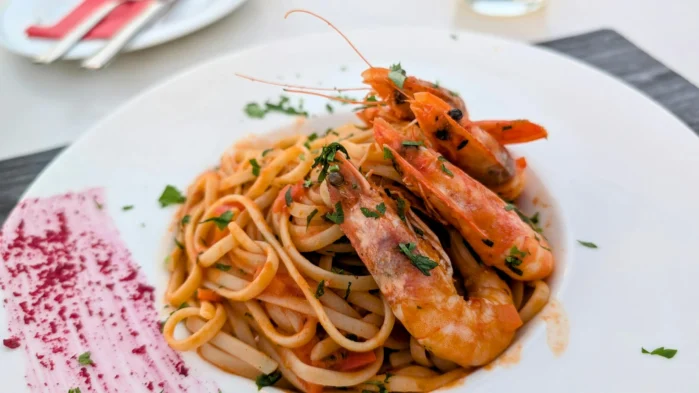
Garnishes
Enhancing your spaghetti with garnishes adds flavor and visual appeal. Here are some ideas:
- Fresh Herbs: Sprinkle chopped basil, parsley, or oregano. These herbs add a fresh, aromatic touch.
- Grated Cheese: Use Parmesan, Pecorino Romano, or mozzarella. A sprinkle of cheese gives a creamy texture and rich taste.
- Red Pepper Flakes: Add a pinch for a spicy kick. Perfect for those who love a bit of heat.
- Lemon Zest: Grate some lemon zest for a zesty flavor. It brightens up the dish and adds a refreshing twist.
- Olive Oil Drizzle: Finish with a drizzle of high-quality olive oil. It enhances the overall flavor and adds a silky texture.
Consider combining these garnishes for an even more delightful experience. For example, pair fresh herbs with grated cheese and a drizzle of olive oil for a well-rounded taste.
Spaghetti Pairing Tips With Side Dish
Pairing your spaghetti with the right sides can create a complete and satisfying meal. Here are some side dish ideas:
| Side Dish | Description |
|---|---|
| Garlic Bread | Crunchy and buttery with a hint of garlic. Perfect for soaking up any leftover sauce. |
| Caesar Salad | Fresh romaine lettuce, creamy dressing, and croutons. Adds a crisp and refreshing element. |
| Roasted Vegetables | Colorful mix of roasted veggies like bell peppers, zucchini, and carrots. Healthy and flavorful. |
| Caprese Salad | Tomatoes, mozzarella, and basil drizzled with balsamic glaze. Light and delicious. |
Choose sides that complement the flavors of your spaghetti. For a classic Italian experience, garlic bread and Caesar salad are excellent choices.
Presentation Tips For Spaghetti
Presenting your spaghetti beautifully can make the meal more enjoyable. Here are some tips:
- Use a Large Serving Bowl: A large, shallow bowl allows the spaghetti to spread out and look more inviting.
- Twirl the Spaghetti: Use a fork and spoon to twirl the spaghetti into neat nests. It adds an elegant touch.
- Layer the Garnishes: Start with a base of spaghetti, then add sauce, and finish with garnishes. This creates a visually appealing layered effect.
- Add a Pop of Color: Use colorful garnishes like fresh herbs, cherry tomatoes, or bell peppers. They make the dish more vibrant.
- Use High-Quality Dinnerware: Serve your spaghetti on nice plates or bowls. It elevates the dining experience.
By following these presentation tips, your simple spaghetti recipe will look as good as it tastes, impressing your family and guests.
How To Store Leftovers
Making a large batch of spaghetti is always a great idea. It ensures you have a delicious meal ready for busy nights. But what do you do with the leftovers? Storing spaghetti properly can save you time and money. It also keeps your meal fresh and tasty. Let’s dive into the best ways to store your leftover spaghetti.
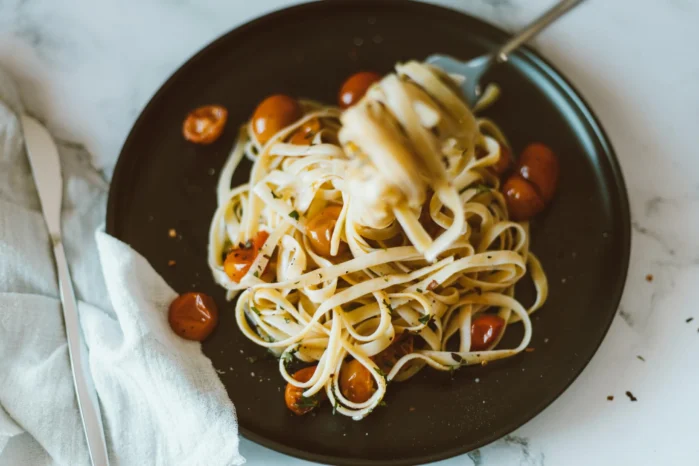
Refrigeration Tips
Storing your leftover spaghetti in the fridge is simple. Follow these steps to keep it fresh:
- Cool It Down: Allow the spaghetti to cool to room temperature before storing.
- Airtight Containers: Use airtight containers to prevent the pasta from drying out.
- Label and Date: Write the date on the container to keep track of freshness.
Here’s a quick table to help you remember:
| Step | Description |
|---|---|
| Cool | Let spaghetti cool to room temperature. |
| Store | Use airtight containers. |
| Label | Write the date on the container. |
Spaghetti can stay fresh in the fridge for up to 4 days. Always check for any signs of spoilage before eating.
Also Read: Easier Homemade Pizza Recipe!
Freezing Methods
Freezing spaghetti is a great way to extend its shelf life. Follow these steps:
- Cool Completely: Make sure the spaghetti is completely cool.
- Portion Control: Divide the spaghetti into meal-sized portions.
- Use Freezer Bags: Place portions in freezer bags, removing as much air as possible.
- Label and Date: Write the date on each bag.
Here’s a table for quick reference:
| Step | Description |
|---|---|
| Cool | Let spaghetti cool completely. |
| Portion | Divide into meal-sized portions. |
| Store | Use freezer bags. |
| Label | Write the date on each bag. |
Frozen spaghetti can last for up to 3 months. Always thaw in the fridge before reheating.
Reheating Techniques
Reheating spaghetti is easy and quick. Here are some effective methods:
- Microwave: Place the spaghetti in a microwave-safe dish. Cover and heat on medium power for 1-2 minutes. Stir halfway through.
- Stovetop: Heat a little olive oil in a pan. Add the spaghetti and cook over medium heat. Stir until heated through.
- Oven: Preheat the oven to 350°F. Place the spaghetti in an oven-safe dish. Cover with foil and bake for 15-20 minutes.
A quick table for reheating methods:
| Method | Instructions |
|---|---|
| Microwave | Heat on medium for 1-2 minutes. |
| Stovetop | Heat in a pan with olive oil. |
| Oven | Bake at 350°F for 15-20 minutes. |
Choose the method that works best for you. Enjoy your spaghetti as if it were freshly made!
Common Mistakes
Spaghetti is a beloved dish enjoyed by many around the world. A simple spaghetti recipe can be quick and delicious, but there are common mistakes that can ruin the meal. Knowing these mistakes can help you perfect your spaghetti and impress your family or guests.
Overcooking Pasta
Overcooking pasta is a common mistake that leads to mushy noodles. Pasta should be cooked al dente, which means “to the tooth” in Italian. This means the pasta should be firm but not hard. Here are some tips to avoid overcooking:
- Follow package instructions for cooking time.
- Taste the pasta a minute or two before the suggested time. It should be firm.
- Use plenty of water to ensure the pasta cooks evenly.
- Add salt to the water for flavor and to help the pasta cook better.
Below is a table with ideal cooking times for different types of pasta:
| Pasta Type | Cooking Time (Minutes) |
|---|---|
| Spaghetti | 8-10 |
| Fettuccine | 10-12 |
| Penne | 10-12 |
Sauce Missteps
Sauce mistakes can ruin a great bowl of spaghetti. The sauce should complement the pasta, not overpower it. Here are some common sauce mistakes and how to avoid them:
- Using too much sauce: The pasta should not swim in sauce. Use just enough to coat the noodles.
- Not mixing the pasta and sauce: Mix them together in a pan before serving. This helps the sauce stick to the pasta.
- Using cold sauce: Warm the sauce before adding it to the pasta. Cold sauce can make the pasta cold and unappetizing.
A simple tip to enhance your sauce is to use the pasta water. Reserve a cup of the starchy cooking water and add it to your sauce. This helps the sauce adhere better to the noodles.
Related Article: Top 8 Healthy Chicken Salad Recipe
Flavor Issues
Flavor is crucial in a simple spaghetti recipe. Bland pasta can be disappointing, but there are easy ways to enhance the taste:
- Salt the cooking water: This adds flavor to the pasta itself.
- Use fresh ingredients: Fresh garlic, herbs, and tomatoes can make a huge difference.
- Finish with cheese: A sprinkle of Parmesan or Pecorino Romano can elevate the dish.
Here’s a quick checklist to ensure your spaghetti is full of flavor:
- Salt the water generously.
- Use fresh, high-quality ingredients.
- Taste and adjust seasoning as you cook.
- Add a final touch of cheese or fresh herbs.
By avoiding these common mistakes, you can make a delicious and perfect bowl of spaghetti every time.
Variations To Try
Spaghetti is a beloved dish that everyone enjoys. With its simple ingredients and quick preparation, it’s a go-to meal for busy nights. But did you know you can elevate your spaghetti with various twists? Here are some exciting variations to try for your next spaghetti night.
Vegetarian Options
Transform your simple spaghetti into a delicious vegetarian meal. Vegetarian options are endless and can be incredibly flavorful. Here are some ideas:
- Roasted Vegetables: Add roasted bell peppers, zucchini, and cherry tomatoes. Toss them in olive oil, garlic, and herbs, then mix with your spaghetti.
- Mushroom Medley: Sauté a variety of mushrooms like cremini, shiitake, and portobello. Add garlic, thyme, and a splash of white wine.
- Spinach and Ricotta: Stir in fresh spinach and dollops of ricotta cheese. Top with grated Parmesan for extra flavor.
These options not only add nutrition but also bursting flavors. For a quick and easy meal, try using pre-roasted vegetables or ready-to-cook mushroom mixes from your local grocery store.
Protein Additions
Adding protein to your spaghetti can make it more satisfying. Here are some tasty protein additions:
- Grilled Chicken: Slice grilled chicken breast and mix it into your spaghetti. Season with Italian herbs.
- Shrimp: Sauté shrimp in garlic and butter, then toss with spaghetti and a squeeze of lemon.
- Meatballs: Classic meatballs made from beef, pork, or turkey. Cook them in tomato sauce and serve over spaghetti.
These protein options not only enhance the taste but also boost the nutritional value. You can also try plant-based proteins like tofu or tempeh for a vegetarian twist.
Spice It Up
If you love spicy food, there are many ways to add heat to your spaghetti. Here are some ideas:
- Chili Flakes: Sprinkle red chili flakes over your spaghetti for a quick kick.
- Spicy Sausage: Use spicy Italian sausage. Cook it and mix with your spaghetti sauce.
- Jalapeños: Add sliced jalapeños to your spaghetti for an extra spicy touch.
For those who enjoy bold flavors, these options will add excitement to your meal. Remember to adjust the spice level to your preference. You can always add more heat, but it’s hard to take it away once it’s there.
Frequently Asked Questions
What Are The Ingredients For Simple Spaghetti?
To make simple spaghetti, you need spaghetti pasta, olive oil, garlic, tomatoes, basil, salt, and pepper.
How Long To Cook Spaghetti Pasta?
Cook spaghetti pasta in boiling salted water for 8-10 minutes. Check for al dente texture.
Can I Add Meat To Spaghetti?
Yes, you can add meat like ground beef or chicken. Cook it separately and mix it in.
What Type Of Sauce Is Best For Spaghetti?
Tomato-based sauces work best for spaghetti. You can use marinara, arrabbiata, or even a simple garlic and olive oil sauce.
Conclusion
This simple spaghetti recipe is perfect for any busy weeknight. It’s quick, delicious, and easy to make. With just a few ingredients, you can create a satisfying meal for the whole family. Try this recipe today and enjoy a classic Italian dish in no time.
Happy cooking!

